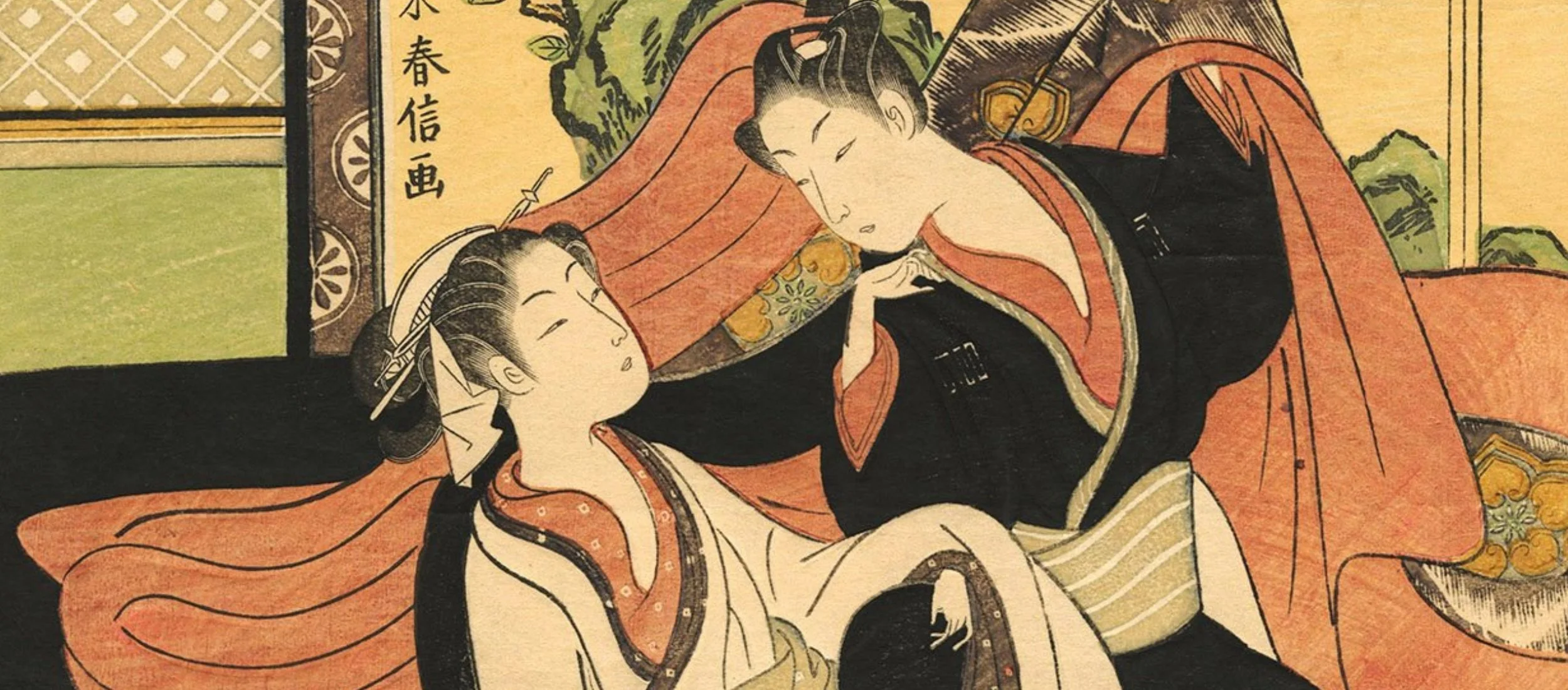HARUNOBU
COLLECTING JAPANESE PRINTS FEATURED UKIYO-E ARTISTSuzuki Harunobu
1725 - 1770
Born in 1725, Harunobu Suzuki was an Edo-period ukiyo-e and shunga artist as well as the inventor of polychrome prints, or nishiki-e. Harunobu's first major breakthrough as an artist came in 1765 when he was commissioned by a group of wealthy Edo patrons to design a calendar print series for the New Year.
Utilizing multiple woodblocks to produce a single image, Harunobu was able to add delicate splashes of color. Additionally, he used embossing techniques to raise certain areas of the image (i.g. kimonos, garments) and added glue to those areas on the back of the print. Harunobu thereby achieved the same visual intensity of urushi-e, or lacquer prints. Needless to say, his patrons were deeply impressed. A year later, Harunobu's polychrome prints were marketed commercially and became a significant commodity in the city of Edo. Before 1765, he had used two or three colors, but by 1766, he used up to ten different colors for a single print. One particular multicolor print series, Mu Tamagawa, provided a prototype for subsequent ukiyo-e artists that would emerge in the following decades. Harunobu continued to churn out hundreds of polychrome prints with both contemporary and classical themes.
Among his favorite contemporary subjects were two great beauties of Edo, Osen (the daughter of a teahouse proprietor at Kasamori Shrine) and Ofuji (a shop owner at Kannon Temple). Despite such favoritism, nearly all of his female figures are depicted in the same slender, graceful, and innocent form. Harunobu Suzuki maintained a dominant presence in printmaking circles, producing an estimated six hundred prints in the six years leading up to his death in 1770.




